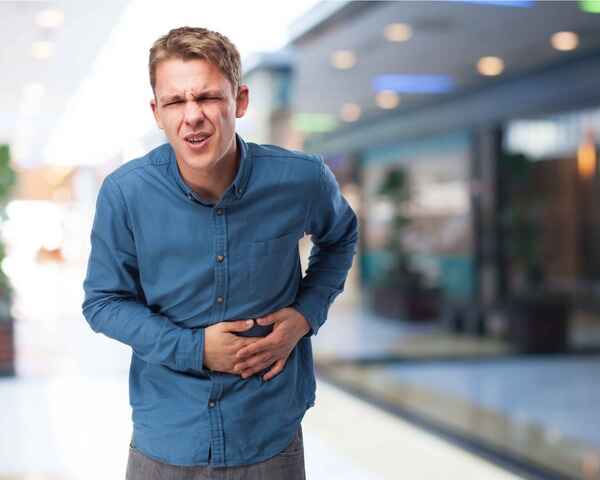What are Gallstones?
Gallstones are hardened bile deposits that can occur in the gallbladder. The liver creates and stores bile, a digestive fluid, in the gallbladder. Your gallbladder contracts and dumps bile into your small intestine (duodenum) when you eat.
Gallstones can be as big as a golf ball or as small as a sand grain. While some people only develop one gallstone, others may do so at once.
Also, Read Complete Guide on Dementia: Causes, Symptoms, and Care Tips
Causes
Up to 75% of the gallstones that medical professionals find are formed of too much cholesterol. Therefore, we may argue that the main risk factor for gallstones is having too much cholesterol in your blood. Your high cholesterol could be caused by a variety of factors. Metabolic problems like obesity and diabetes are some of the most prevalent causes.
High blood cholesterol levels result in increased cholesterol content in the bile. Before sending bile to your gallbladder, your liver filters cholesterol from your blood and deposits it in bile as a waste product. Bile chemicals (lecithin and bile salts) are thought to dissolve cholesterol. However, if there is an excess of it, these substances may not be adequate.
Symptoms
Gallstones rarely cause symptoms. Symptoms appear only when a stone in the gallbladder becomes lodged and obstructs the flow of bile through your system.
If you experience symptoms, they may include the following:
- Pain in your upper abdomen, usually on the right side, directly under your ribs
- Experiencing pain in your right shoulder or back
- A stomachache
- Vomiting
- Pain in the abdomen that lasts several hours or is severe
- Chills and fever
- Skin or eyes that are yellow
- Gas, indigestion, and heartburn are more digestive issues.

Risk factors
Some gallstone risk factors are related to nutrition, whereas others are more difficult to control. These include:
- Age
- Sex
- Family history
- Obesity
- A diet high in fat or cholesterol and poor in fiber
- Weight loss
- Being a woman of Native American or Mexican descent
- Being 60 years or older
- Experiencing cirrhosis
- Using some drugs to decrease cholesterol when pregnant
- Taking drugs that contain a lot of estrogens, such as certain birth control
- Having liver disease
Diagnosis
The following tests and techniques are used to identify gallstones and their side effects:
- Abdominal ultrasonography – Abdominal ultrasonography is performed by moving a device (transducer) across your stomach.
- Endoscopic ultrasound – This method can help locate tiny stones that abdominal ultrasonography may miss.
- Imaging tests – Oral cholecystography, a hepatobiliary iminodiacetic acid (HIDA) scan, computerized tomography (CT), magnetic resonance cholangiopancreatography (MRCP), or endoscopic retrograde cholangiopancreatography (ERCP) may be performed as further testing.
- Blood test – Blood tests may identify infection, jaundice, pancreatitis, or other gallstone-related problems.
Treatment
The severity of the symptoms and problems associated with gallstones determines the course of treatment. In general, there are two ways for gallstone treatment:
- Conservative therapy – Conservative therapy may be indicated for persons with asymptomatic gallstones or those having minimal symptoms. This method entails keeping an eye on the illness, making dietary modifications, and dealing with symptoms as they emerge. If gallstones are not causing any complications, they may not necessitate immediate medical attention.
- Surgical treatment – If gallstones are causing significant symptoms, or complications, or are recurring, surgery may be required. There are primarily two surgical options:
- Cholecystectomy: This is the most common and effective gallstone treatment. It entails surgically removing the gallbladder. The gallbladder is not a necessary organ, and humans can function normally without it. Cholecystectomy can be performed using traditional open surgery or minimally invasive laparoscopic surgery, which uses smaller incisions and results in a faster recovery.
- Endoscopic Retrograde Cholangiopancreatography (ERCP): ECRP is a procedure that combines endoscopy and X-ray imaging to find and remove gallstones from the bile ducts. It is usually utilized when a gallstone becomes lodged in the common bile duct and causes an obstruction.
Diet
A gallstones diet is intended to reduce symptoms and lower the risk of problems linked with gallstones. Here are some nutritional suggestions:
- A gallstones diet is intended to reduce symptoms and lower the risk of problems linked with gallstones. Here are some nutritional suggestions:
- Reduce your consumption of fried foods, fatty meats, full-fat dairy products, and highly processed foods.
- Incorporate fruits and vegetables, whole grains, legumes, and nuts into your diet.
- Choose healthy fats in moderation, such as olive oil, avocado, and almonds, as they may not cause gallbladder problems as much as saturated fats.
- Choose skinless fowl, fish, tofu, and lentils as lean protein sources.
- Fasting or rapid weight loss should be avoided.
- Stay hydrated throughout the day.
- Caffeine and alcohol should be avoided.
- Eating smaller, more frequent meals may help.
- Include low-fat dairy products or other calcium-rich foods, but always listen to your doctor’s advice.
- Avoid Consuming Trigger Foods
Also, Read Why Blood Donation is Important? Giving = Living

Prevention
- Maintain a Healthy Weight
- Eat a Healthy Diet
- Stay Hydrated
- Limit Alcohol Consumption
- Avoid Rapid Fasting
- Be Cautious with Medications
- Exercise Regularly
- Be Mindful of Your Diet
- Consider Ursodeoxycholic Acid (UDCA)
- Regular checkups





